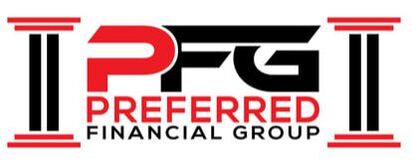Types of Life Insurance

There are two major types of life insurance - term and whole life. Whole life is sometimes called permanent life insurance, and it includes several subcategories, including traditional whole life, universal life, variable life and variable universal life.
Term Life Insurance
Term Insurance is the simplest form of life insurance. It pays only if death occurs during the term of the policy, which is usually from one to 30 years. Most term policies have no other benefit provisions.
There are two basic types of term life insurance policies - level term and decreasing term.
• Level term means that the death benefit stays the same throughout the duration of the policy.
• Decreasing term means that the death benefit drops, usually in one-year increments of the policy's term.
Whole Life/Permanent Insurance
Whole life or permanent insurance pays a death benefit whenever you die - even if you live to 100. There are two major types of whole life or permanent life insurance - traditional whole life and universal life with variations within each type. In the case of traditional whole life, both the death benefit and the premium are designed to stay the same (level) throughout the life of the policy. The cost per $1,000 of benefit increases as the insured person ages, and it obviously gets very high when the insured lives to 80 and beyond. The insurance company could charge a premium that increases each year, but that would make it very hard for most people to afford life insurance at advanced ages. So the company keeps the premium level by charging a premium that, in the early years, is higher than what's needed to pay claims, investing that money, and then using it to supplement the level premium to help pay the cost of life insurance for older people.
By law, when these over-payments reach a certain amount, they must be available to the policy owner as a cash value if he or she decides not to continue with the original plan. The cash value is an alternative, not an additional, benefit under the policy.
• Whole or ordinary life
This is the most common type of permanent insurance policy. It offers a death benefit along with a savings account. If you pick this type of life insurance policy, you are agreeing to pay a certain amount in premiums on a regular basis for a specific death benefit. The savings element would grow based on dividends the company pays to you.
• Universal or adjustable life
This type of policy offers you more flexibility than whole life insurance. You may be able to increase the death benefit, if you pass a medical examination. The savings vehicle (called a cash value account) generally earns a money market rate of interest. After money has accumulated in your account, you will also have the option of altering your premium payments - providing there is enough money in your account to cover the costs. This can be a useful feature if your economic situation has suddenly changed. However, you would need to keep in mind that if you stop or reduce your premiums and the saving accumulation gets used up, the policy might lapse and your life insurance coverage will end. You should check with your agent before deciding not to make premium payments for extended periods because you might not have enough cash value to pay the monthly charges to prevent a policy lapse.
Term Life Insurance
Term Insurance is the simplest form of life insurance. It pays only if death occurs during the term of the policy, which is usually from one to 30 years. Most term policies have no other benefit provisions.
There are two basic types of term life insurance policies - level term and decreasing term.
• Level term means that the death benefit stays the same throughout the duration of the policy.
• Decreasing term means that the death benefit drops, usually in one-year increments of the policy's term.
Whole Life/Permanent Insurance
Whole life or permanent insurance pays a death benefit whenever you die - even if you live to 100. There are two major types of whole life or permanent life insurance - traditional whole life and universal life with variations within each type. In the case of traditional whole life, both the death benefit and the premium are designed to stay the same (level) throughout the life of the policy. The cost per $1,000 of benefit increases as the insured person ages, and it obviously gets very high when the insured lives to 80 and beyond. The insurance company could charge a premium that increases each year, but that would make it very hard for most people to afford life insurance at advanced ages. So the company keeps the premium level by charging a premium that, in the early years, is higher than what's needed to pay claims, investing that money, and then using it to supplement the level premium to help pay the cost of life insurance for older people.
By law, when these over-payments reach a certain amount, they must be available to the policy owner as a cash value if he or she decides not to continue with the original plan. The cash value is an alternative, not an additional, benefit under the policy.
• Whole or ordinary life
This is the most common type of permanent insurance policy. It offers a death benefit along with a savings account. If you pick this type of life insurance policy, you are agreeing to pay a certain amount in premiums on a regular basis for a specific death benefit. The savings element would grow based on dividends the company pays to you.
• Universal or adjustable life
This type of policy offers you more flexibility than whole life insurance. You may be able to increase the death benefit, if you pass a medical examination. The savings vehicle (called a cash value account) generally earns a money market rate of interest. After money has accumulated in your account, you will also have the option of altering your premium payments - providing there is enough money in your account to cover the costs. This can be a useful feature if your economic situation has suddenly changed. However, you would need to keep in mind that if you stop or reduce your premiums and the saving accumulation gets used up, the policy might lapse and your life insurance coverage will end. You should check with your agent before deciding not to make premium payments for extended periods because you might not have enough cash value to pay the monthly charges to prevent a policy lapse.


